About the Editors
Editor-in-Chief
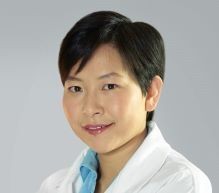 Baohua Jia, MD
Baohua Jia, MD
Professor, Centre for Atomaterials and Nanomanufacturing
RMIT University
Melbourne, Australia
Prof. Jia’s research focuses on the fundamental light and nanomaterial interactions. In particular her work on laser manipulation of two-dimensional materials has led to the design and fabrication of functional nanostructures and nanomaterials for effective harnessing and storage of clean energy from sunlight, purifying water and air for clean environment and imaging, spectroscopy and nanofabrication using ultrafast laser towards fast-speed all-optical communications and intelligent manufacturing.
Advisory Editors
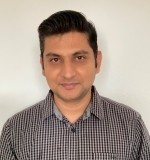 Rakesh Rana
Rakesh Rana
Associate Editor, Nature Communications
Rakesh joined Nature Communications in July 2022. He received his PhD in Physics from the IISER Bhopal, India. He then joined Helmholtz Zentrum Dresden-Rossendorf for his post-doctoral research on the generation and utilization of broadband and narrowband Terahertz pulses to study different functional materials. Rakesh handles manuscripts on materials for optics, integrated optics, terahertz optics, and engineering.
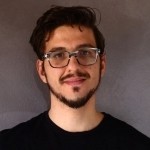
Cristiano Matricardi
Senior Editor, Nature Communications
Cristiano joined Nature Communications in February 2021. He received a B.S. degree from the University of Camerino and a MSc in physical and inorganic chemistry from the University of Pavia. He obtained his PhD from the Institute of Material Science of Barcelona (ICMAB-CISC), with a thesis on hybrid plasmonic-photonic nanostructures for enhanced spectroscopies. After his doctorate, Cristiano worked as an Assistant Editor for MDPI in Barcelona. He now handles manuscripts in the areas of topological photonics, nonlinear optics and lasing.
Associate Editors
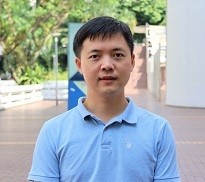 Prof. Guangwei Hu
Prof. Guangwei Hu
School of Electrical and Electronic Engineering
Nanyang Technological University
Singapore
Dr. Hu's research interest is multispectral nanophotonics with the platform of metamaterials, metasurfaces, optical crystals, and low-dimensional quantum nanomaterials, covering the frequency from visible, infrared, and THz. The long-term goal is to develop the compact nanodevices for novel photonic technologies such as imaging, microscopy, communications, photonic chips, thermal management, computations, quantum devices and others.
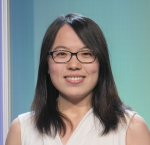
Prof Mengjie Yu
University of Southern California, Los Angeles
USA
Mengjie Yu is Gabilan Assistant Professor in the Department of Electrical and Computer Engineering at University of Southern California. Her research group of “Nanoscale Nonlinear and Quantum Photonics Lab” works on advancing the fundamental understanding of nonlinear sciences at nanoscale, as well as realize next-generation optoelectronic circuits for optical communication, computing, sensing, ranging and metrology.
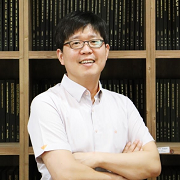 Prof. Junsuk Rho
Prof. Junsuk Rho
Pohang University, Pohang
South Korea
Prof. Rho is not only developing a new concept of novel optical nanomaterials having extraordinary and unprecedented eletromagnetic properties based on fundamental physics and experimental studies of deep sub-wavelength light-matter interaction, but also realizing engineering device applications including, but not limited to, super-resolution imaging, negative index materials, tunable/active/reconfigurable metasurfaces, highly efficient light controlling devices, ultra-sensitive biomedical sensors, nanoscale lasers, next-generation displays, VR/AR/XR devices, radiative cooling devices, unconventional nanofabrications, scalable nanomanufacturing methods and deep-learning-based design methodologies.
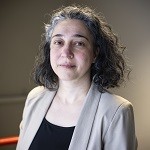 Prof. Humeyra Caglayan
Prof. Humeyra Caglayan
Tampere University,
Tampere, Finland
Prof. Humeyra Caglayan is an associate professor of physics in the Faculty of Engineering and Natural Sciences at Tampere University and leads the Metaplasmonic group. She received her B.S and Ph.D. degrees in Physics from Bilkent University, Turkey, in 2003 and 2010, respectively. Between 2010 and 2013, she worked as a postdoctoral scholar in Prof. Engheta's group at the University of Pennsylvania. She received The Young Scientists Award (GEBIP) by the Turkish Academy of Science, the 2015 Unesco Loreal Women in Science Award (TURKEY) and the 2016 Science Academy’s Young Scientist Awards Program (BAGEP) by Turkish Science Academy. Her current research interests include metamaterials, plasmonics, metasurfaces, metaoptics and integrated photonics.
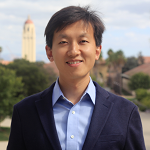 Prof. Wei Li
Prof. Wei Li
Changchun Institute of Optics, Fine Mechanics and Physics, Chinese Academy of Sciences
Changchun, China
Prof. Li's research focuses on thermal photonics and nanophotonics. On one hand, he is interested in investigating how one can manipulate photons as energy carriers and the thermodynamic consequence, with applications in radiative cooling, energy harvesting, and novel thermal management techniques. On the other hand, he is interested in manipulating photons as information carriers using nanophotonics, with applications in novel photodetection, imaging, optical computing, and light-emitting devices.
 Prof. Pascal Del'Haye
Prof. Pascal Del'Haye
Max Planck Institute for the Science of Light
Erlangen, Germany
Pascal Del'Haye leads the Microphotonics Research Group at the Max Planck Institute for the Science of Light in Germany. His research focus is on integrated photonics, nonlinear optics in microresonators and optical frequency comb generation.
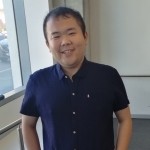
Dr. Jiayang Wu
Swinburne University of Technology
Victoria, Australia
Dr. Jiayang Wu is currently a Senior Research Fellow and a Senior Lecturer at the Optical Sciences Centre, Swinburne University of Technology. His research interests include integrated photonics, nonlinear optics, 2D materials, and optical communications. As of December 1st 2023, he has over 100 publications in SCI journals, highlighted by Nature, Nature Reviews Chemistry, Advanced Materials, Advances in Optics and Photonics, Nature Communications, Applied Physics Reviews, Small, Light: Advanced Manufacturing, Nano Letters, and Laser & Photonics Review. He is also an inventor on 15 filed patents describing integrated photonic devices and optical communication technologies. In 2021, Dr. Wu was awarded the Australian National Research Award as the top researcher in the field of Optics & Photonics (only 1 person). From 2021‒2023, he also ranked in the top 2% global highly cited researchers in the discipline of Optics (Stanford University & Elsevier science-wide author databases of standardized citation indicators).
Editorial Board Members
Isabelle Staude, PhD, Friedrich Schiller University Jena, Jena, Germany
Yuri Kivshar, PhD, Australian National University, Australia
Perry P. Shum, PhD, Southern University of Science and Technology, China
Andrea C. Ferrari, PhD, University of Cambridge, UK
Nicholas X. Fang, PhD, University of Hong Kong, China
Laura Na Liu, PhD, University of Stuttgart, Germany
Xiangfeng Duan, PhD, University of California, Los Angeles, USA
Hong-Bo Sun, PhD, Tsinghua University, China
Lan Fu, PhD, The Australian National University Canberra, Australia
Yun-Feng Xiao, PhD, Peking University, China
Nicolò Maccaferri, PhD, Umeå University, Sweden
Angelos Xomalis, PhD, Norwegian University of Science and Technology, Norway
Stanley Cheung, PhD, Hewlett Packard Labs, California, USA
Vassilios Kovanis, PhD, Virginia Tech, Virginia, USA
Saba Arash, PhD, The University of Texas at Austin, Texas, USA
Jinsheng Lu, PhD, Harvard University, Massachusetts, USA
Jun-Yu (Bruce) Ou, PhD, University of Southampton, UK
Wenfa Xie, PhD, Jilin University, China
Marco Colangelo, PhD, Northeastern University, Massachusetts, USA
Manohar Chirumamilla, PhD, Aalborg University, Denmark
Patrice Genevet, PhD, Colorado School of Mines, Colorado, USA
Interested in joining the journal team?
If you are interested in joining the journal as an Editorial Board Member or Associate Editor, please complete this Google form. Associate Editors are part of the editorial team that handle manuscripts, while Editorial Board Members are regular reviewers and are consulted for ad hoc advice. We will contact you if your expertise meets the needs of the journal.
Nature Portfolio journals are committed to promoting practices that support diversity, equity and inclusion in science communication and publishing, and we strongly encourage gender, race, ethnic, geographic, career stage and other diversity in our journal teams. Our in-house staff will use your information only for the purposes of identifying new editorial team or board members. Please contact the journal by email if you would like to remove your information from these records.
Please note that we are not able to respond to all applicants.
